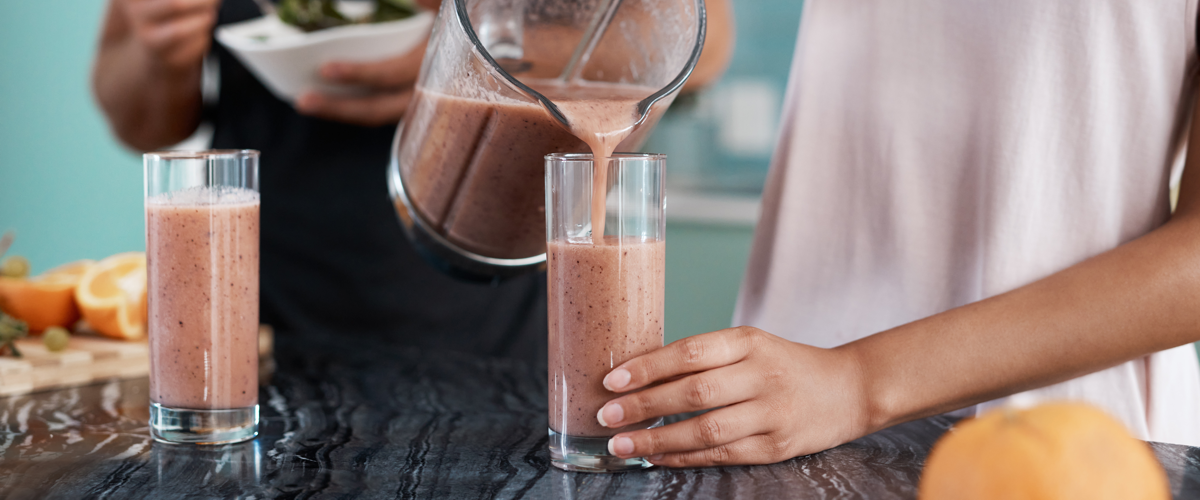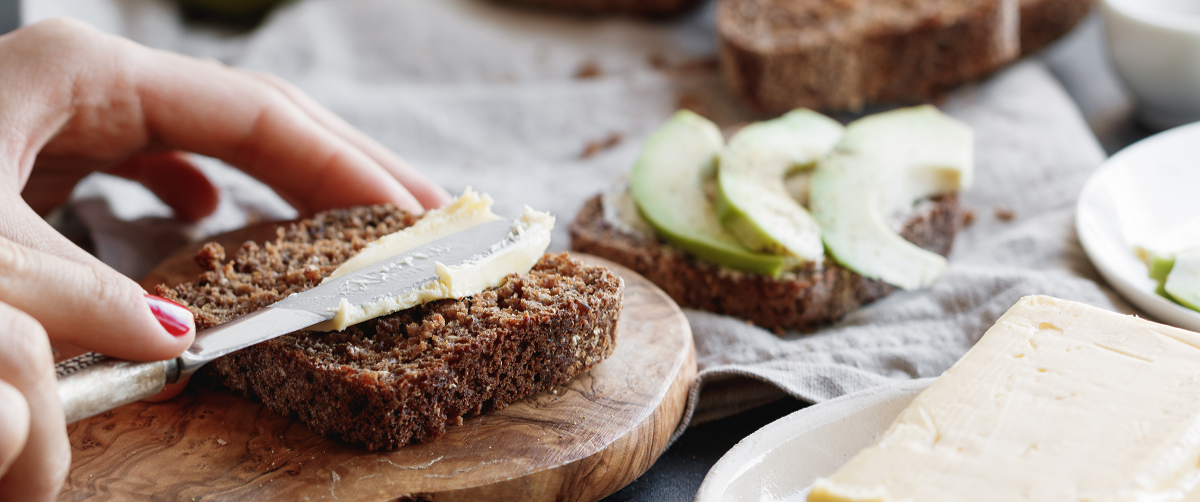5 functional foods explained
Functional foods may be something you’ve heard of, but it can be confusing to know what they are. This is what you need to know and how to add these 5 into your diet

Britons today are taking more of an interest in their health – particularly post-Covid. According to the government, in 2021, 7 in 10 adults in England were motivated to get healthier due to the pandemic.
And while the country is on a wellbeing kick, Vitality thinks it’s worth knowing more about ‘functional foods’ and how they can benefit our health.
Of course, all healthy foods have their benefits. But functional foods are proven to have additional purposes that are part of their make-up, and legislation exists to prevent manufacturers from making unsubstantiated claims.
What are functional foods?
According to the British Nutrition Foundation, functional e foods deliver additional or enhanced benefits over and above their basic nutritional value”. This should not be confused with terms like ‘superfoods’.
“Superfoods are more of a marketing term used by the food industry to sell foods rich in numerous nutrients at higher price points, whereas functional foods contain nutrients that have been shown in countless studies to improve health outcomes,” explains Rachel Clarkson, Specialist Dietitian and Nutritionist, also known as The DNA Dietitian.
“For example, a typical superfood is a goji berry, rich in fibre, potassium, copper, iron and zinc, whereas a functional whole food would be actual berries [such as a blueberry], which contains anthocyanins (a type of phytochemical), in addition to all the other nutrients,” she adds.
“These have been shown to prevent cancer, reduce heart disease risk and keep your brain in good health.”
Functional foods – the facts:
- Are proven to be able to reach the point in the body where they’re efficiently utilised (such as the small intestine and colon for probiotics).
- Are not expensive or hard to find.
- Include kitchen staples like oats, yoghurt, garlic and tinned mackerel.
Functional vs fortified – what’s the difference?
“With conventional functional foods, the beneficial substance is naturally occurring,” notes Ryan James, Health & Wellbeing Advisor at Vitality. “Whereas fortified or modified foods have had ingredients added to provide the additional health benefits.
“Foods are fortified either to boost the quantity of a nutrient present in the food, or to restore a nutrient that may have been lost during processing.”
As a result, many fortified foods will also be classed as functional. A ‘whole food’ example would be omega 3, which is naturally found in oily fish, while a ‘modified’ functional food would be eggs that are rich in omega 3 because the chicken has been given omega 3-rich feed.
Some common fortified foods include:
- White bread: It’s mandatory to fortify non-wholemeal wheat flours with iron, thiamin or vitamin B1 [which cannot be made by the body], calcium and niacin (vitamin B3), because these nutrients are lost in the milling process.
- Breakfast cereals: Often voluntarily fortified, these contribute 20% of the average iron intake and 13% of the average daily vitamin D intake of British adults.
Now that we’ve explained the science behind functional foods, here are five that you can easily implement into your diet today.
Fermented foods
Function: Digestion and immunity
“Fermented foods like kefir, sauerkraut, pickled vegetables, miso and kimchi (spicy Korean pickled cabbage) are a great source of live cultures,” says Rachel. “And there’s ongoing research into how certain live cultures support immunity.”
These foods can be more beneficial than supplements due to their variety of live microorganisms, rather than a few specific strains.

We also know that when our gut plays host to a wide variety of helpful bacteria it has a positive effect on our digestion, but growing evidence suggests it also stimulates the immune system and dials down inflammation.
For example, foods fortified with the Lactobacillus and Bifidobacterium bifidum species can help reduce diarrhoea and calm IBS symptoms.
Prebiotics
Function: Digestion and mineral absorption
Prebiotics are a type of dietary fibre that feed our good gut bacteria and encourage them to grow. “A diet containing a variety of fibrous and fermented foods can promote a healthy gut, which has become increasingly associated with immune function,” says Ryan.
Prebiotics can be found in but is not limited to: artichokes, asparagus, bananas, chicory, tomatoes, garlic, onions and leeks as well as whole grain cereals. Prebiotic-packed foods, however, are non-digestible, which may sound counterproductive, but bear with us.
By being non-digestible, they pass through the upper part of the gastrointestinal tract (part of the digestive system) and reach the colon to encourage growth of beneficial bacteria.
Not only do prebiotics feed the good bacteria, they also inhibit the growth of harmful bacteria and help to better absorb minerals – particularly calcium.
Plant stanols or sterols
Function: Lower cholesterol
Another functional food is one that you might have seen advertised on the TV. Special spreads that claim to help bring down cholesterol are another example of functional foods.
These types of spreads are blended with stanols and sterols, which are naturally present in plant-based foods, such as vegetable oils, nuts, fruits and vegetables. And these compounds’ superpower is to reduce the absorption of cholesterol, due to their naturally similar structure.

Excess and unabsorbed cholesterol is then excreted from the body. “A plant sterol or stanol-enriched yoghurt has the ability to reduce cholesterol to help reduce the risk of heart disease,” adds Rachel.
And there’s research out there that explains the beneficial functions of these foods. Usually 30-60% of total cholesterol is absorbed from the intestine into the blood, but when plant stanol and sterol esters are present, that falls to around 20%, according to the British Nutrition Foundation, and the reduction of bad cholesterol, or LDL cholesterol, ranges between 6% and 15%.
Stanols or sterols are often added to spreads, milk, yoghurts, salad dressings and mayonnaise.
Dietary fibre
Function: Weight management
Britons over the age of 14 are now being told to consume 30g of fibre a day – and there’s no wonder due to the broad benefits. More obvious benefits to eating fibre include, preventing constipation and lowering cholesterol.
But there are other lesser known positives to consuming fibre. These include improving gut health and managing weight, due to the fact they make you feel full. Research has found that eating a high-fibre diet can also help to cut your risk of heart disease, stroke, type 2 diabetes and bowel cancer.
Fibre is naturally present in fruit and vegetables, beans, nuts, seeds and potato with skins, while ‘roughage’ in wholemeal bread, wholegrain breakfast cereals and brown pasta or rice are another good source of fibre.
Omega 3 fatty acids
Function: Eye, brain and heart health
The health benefits of omega 3 have been heavily researched. A recent study even found that regularly eating oily fish can increase life expectancy by almost five years. And some of the best sources come from oily fish, such as salmon, mackerel and sardines.
This is because of their high content of fatty acids: eicosapentaenoic and docosahexaenoic , for example. “Omega -3 fatty acids may have the ability to lower heart disease risk, protect against some cancers and improve cognition,” continues Rachel.
For those that have a plant-based diet, it can be trickier to get your omega 3 intake. Foods such as flaxseed and walnuts contain , which the body finds harder to convert. Thankfully, algae and seaweed are some of the best plant-based options for vegans and vegetarians to get the optimum amount of omega 3.
“Functional foods containing omega 3, such as oily fish, also have a benefit to our cardiovascular system and help to reduce inflammation,” says Ryan.
Recent articles

How to stay active in the winter months
Getting active at the best of time can be hard enough, let alone in the cold, wet winter months. Here are five ways to stay active at this time of year

Feeling lonely? 4 ways to combat loneliness this season
For all the fun and frolics of the festive season, for many it can bring an equal amount of heartache. So, why not lift your - or someone else’s - spirits this time of year with these simple tips?

The way to avoid festive burnout? Just say ‘no’
For all of its fun, the festive period can be incredibly stressful too. Hoping to escape burnout this holiday season? Try saying ‘no’, writes Jennifer Wallis
